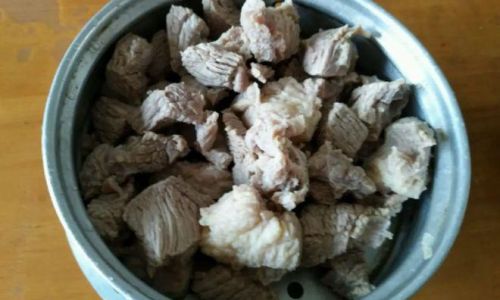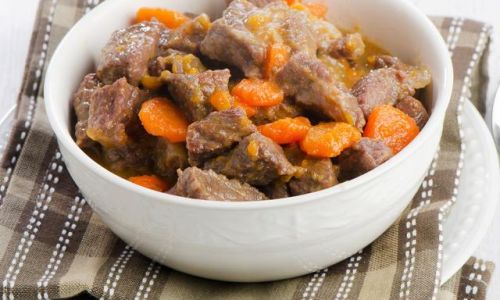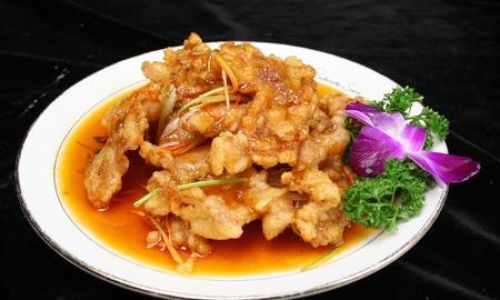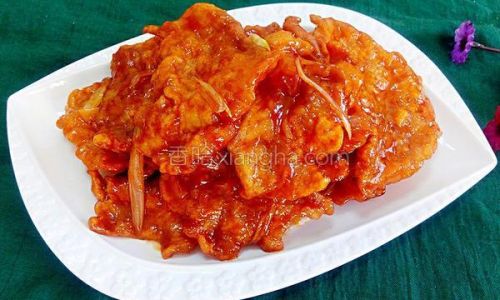Introduction
Beef stew is a timeless dish that warms the soul and satisfies the palate. Its rich, hearty flavor and tender meat make it a favorite among food enthusiasts worldwide. However, achieving that perfect, fork-tender beef can be a challenge for even the most seasoned cooks. In this comprehensive guide, we’ll delve into the intricacies of how to cook beef stew to ensure your meat is melt-in-your-mouth tender. From selecting the right cut of beef to mastering the cooking process, we’ll cover every step in detail, ensuring you can create a restaurant-quality beef stew at home.
Chapter 1: Choosing the Right Cut of Beef

The foundation of any great beef stew is the quality and type of beef you use. Not all cuts are suited for stewing, so it’s crucial to make an informed choice. Here are some of the best cuts for beef stew:
-
Chuck Roast: This cut comes from the shoulder area of the cow and contains a good amount of marbling, which adds flavor and moisture during cooking. It’s often labeled as “chuck steak” or “boneless chuck roast.”
-
Brisket: Brisket is another popular choice for beef stew, especially the flat cut. It’s well-marbled and benefits from slow cooking, becoming incredibly tender.
-
Short Ribs: While traditionally used for braises, short ribs can also be cut into smaller pieces and used in stew. They offer a rich, beefy flavor and a tender texture when cooked for an extended period.
-
Round Tip or Bottom Round: These cuts are leaner but still contain enough fat to keep the meat moist during cooking. They might require a bit more attention to prevent drying out.
When selecting your beef, look for cuts that are well-marbled, as the fat will melt during cooking, basting the meat and keeping it tender. Avoid cuts that are overly lean, as they can become dry and tough.
Chapter 2: Preparation Techniques
Once you’ve chosen your cut of beef, it’s time to prepare it for cooking. Proper preparation is key to achieving tender, flavorful beef stew.
-
Trimming the Fat: While some fat is beneficial for flavor and moisture, excess fat can make your stew greasy. Trim off any large pieces of fat, leaving just enough to keep the meat moist.
-
Cutting the Meat: Cut the beef into uniform pieces, typically about 1.5 to 2 inches in size. This ensures that all pieces cook evenly and reach tenderness at the same time.
-
Seasoning: Season your beef generously with salt and pepper. You can also use a blend of herbs and spices like thyme, rosemary, garlic powder, and paprika to enhance the flavor.
-
Searing the Meat: Before adding the beef to the stew pot, sear it in a hot pan with a bit of oil. This locks in juices, adds depth of flavor, and creates a beautiful caramelized crust. Work in batches to avoid overcrowding the pan, and don’t overcrowd it; this will ensure an even sear.
Chapter 3: Selecting and Preparing Your Vegetables
Vegetables add both flavor and nutrition to your beef stew. Here are some classic choices and tips for preparing them:
-
Onions and Garlic: These aromatic vegetables form the base of your stew. Finely chop them and sauté them in the same pan you used to sear the beef, deglazing it with a bit of broth or wine to capture all the flavorful bits stuck to the bottom.
-
Carrots and Potatoes: Peel and chop carrots and potatoes into bite-sized pieces. Potatoes can be added later in the cooking process to prevent them from becoming too mushy.
-
Celery: Chop celery stalks into small pieces. They add a subtle sweetness and crunch to the stew.
-
Tomatoes: Fresh, canned, or pureed tomatoes can be used. They add acidity and richness to the broth.
-
Other Options: Feel free to add other vegetables like peas, turnips, or parsnips, depending on your preference.
Chapter 4: Creating the Broth

The broth is the lifeblood of your beef stew, providing flavor, moisture, and the environment in which the meat and vegetables cook. Here are some tips for making a flavorful broth:
-
Beef Broth or Stock: Use high-quality beef broth or homemade beef stock. This will add depth of flavor to your stew.
-
Red Wine: Adding a cup of red wine (preferably a full-bodied variety like Cabernet Sauvignon or Merlot) can enhance the complexity of your stew. If you prefer not to use wine, you can substitute it with additional broth or a splash of vinegar for acidity.
-
Aromatics: Include bay leaves, thyme sprigs, and a few whole peppercorns in your broth. These will infuse the stew with subtle, aromatic flavors.
Chapter 5: The Cooking Process
Now that you’ve prepared your ingredients, it’s time to cook your beef stew. Here’s a step-by-step guide:
-
Combining Ingredients: In a large, heavy-bottomed pot or Dutch oven, combine the sautéed vegetables, seared beef, and broth. Make sure the meat is fully submerged. If not, add more broth or water.
-
Bringing to a Simmer: Bring the mixture to a gentle simmer over medium-high heat. Once it reaches a simmer, reduce the heat to low or medium-low, depending on your stove. The goal is to maintain a gentle simmer, not a rolling boil.
-
Covering and Cooking: Cover the pot and let the stew cook slowly. The cooking time will depend on the cut of beef and your preferred level of tenderness, but it typically ranges from 2 to 4 hours. Chuck roast and brisket generally take longer than short ribs or leaner cuts.
-
Checking and Stirring: Occasionally check the stew, stirring gently to prevent sticking. If the liquid level drops too low, add more broth or water as needed.
-
Adding Vegetables: If you’re using potatoes, add them in the last hour of cooking to prevent them from becoming too soft. Other vegetables like carrots can be added earlier, along with the beef.
-
Taste and Adjust: Once the beef is tender and the vegetables are cooked to your liking, taste the stew and adjust the seasoning with salt, pepper, or additional herbs as needed.
Chapter 6: Finishing Touches
Your beef stew is nearly ready, but a few finishing touches can elevate it to the next level:
-
Thickening the Broth: If your stew is too thin, you can thicken the broth by making a slurry of cornstarch and water (1 tablespoon cornstarch mixed with 1 tablespoon water) and stirring it into the stew. Let it simmer for a few minutes until it reaches your desired consistency.
-
Fresh Herbs: Finish the stew with a handful of chopped fresh herbs like parsley, thyme, or rosemary. This adds a fresh, vibrant note to the dish.
-
Accompaniments: Serve your beef stew over mashed potatoes, rice, or crusty bread to soak up all the delicious juices.
Conclusion
Cooking tender beef stew is an art that requires patience, attention to detail, and a love for good food. By following the steps outlined in this guide, you’ll be able to create a dish that’s not only visually appealing but also bursting with flavor and texture. Remember, the key to tender beef stew is slow cooking and using high-quality ingredients. Happy cooking!






0 comments